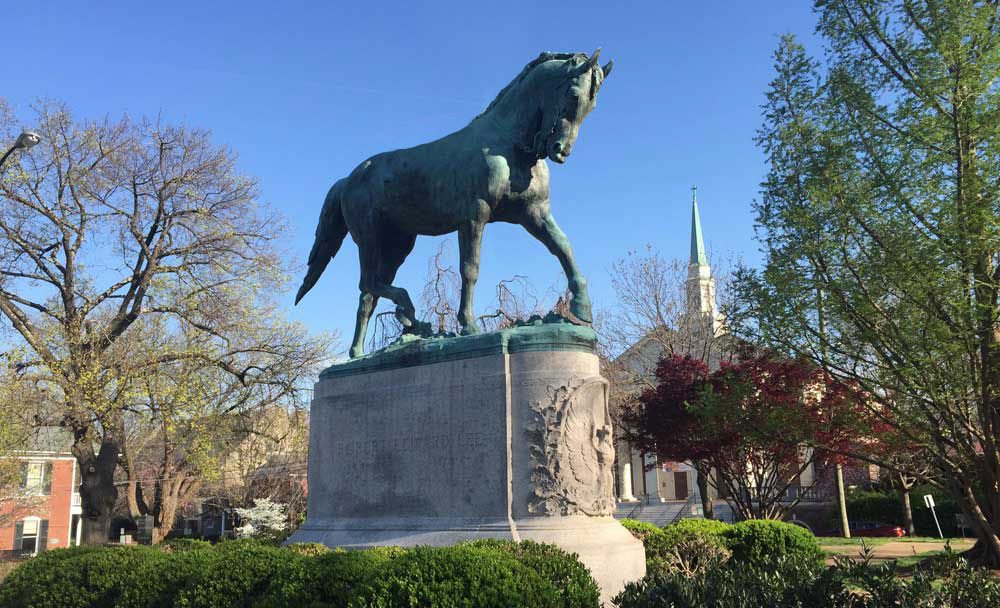
Photo by Sefe Emokpae, edited by GeekDad
With the tragic events in Charlottesville, Virginia, news of the boldness such groups have been displaying recently has been made very clear to Americans, and indeed to the world at large. It’s reached the point where even young children are likely to hear something about the situation – particularly if they can read well – and are likely to be confused about some of it. Here, then, are some suggestions from us at GeekDad and GeekMom for how to help children process what they see and hear. Please note that we are not psychologists, pediatric or otherwise; this is just advice from parents to parents.
The most important part of helping children deal with news of people being hurt or hurting others is to reassure them that you will always do anything and everything you can to keep them safe. What you say after that depends a lot on your kids’ level of maturity, because many little kids aren’t likely to comprehend much more than the fact that there are groups of people who all really believe that they’re right and that the others are wrong, and they feel so strongly about this that some of them start to fight physically. And some older kids may be able to comprehend a lot of what they hear, see, and read about the violence, but not have the historical and/or intellectual grounding to figure out what’s really going on. Back in January, GeekMom Jackie Reeve wrote an excellent list of books that can help teach children about protesting and activism, and we recommend you seek them out as a resource if you feel they would be helpful for your children. Added: The American Psychological Association has some excellent resources, too: particularly, “Talking to kids about discrimination,” “Helping your children manage distress in the aftermath of a shooting,” and “Building resilience to manage indirect exposure to terror.”
It’s probably most important to make sure kids understand that many conflicts between large groups of adults really aren’t that much different from those between groups of kids, only with people being much more likely to get badly hurt or to injure someone else. If your kids have a basic understanding of the history of slavery in the United States, the Civil War, the Nazis, and the Holocaust, discussing the white nationalist movement with those as context is probably the best and most honest way to explain it. If not, then maybe the rest of this article can help you find a way to give them some context without going into a comprehensive history lesson.
What do these people want, and why?
It’s more complicated than this, but basically they want people who look like them to have all the power and privilege, and they want all the people who don’t look like them to leave the country, to stay and be servants, or simply to be killed. There are many people involved in this movement, and it’s important to understand that we can’t know what every person is thinking; as a group, though, that’s what their actions and words demonstrate what they want.
To understand why they want that is more difficult, because of course we can’t see into their minds, and even if we could, there’s a good chance that some of them don’t really know why they feel that way. A sort of general xenophobia (the fear of people and things that are different from what you’re used to) is often a useful survival trait – for unintelligent animals who don’t have much beyond “familiar” and “strange” as ways to identify others of their kind. That’s why the evolution of humans kept that feeling as part of our basic instincts: when you first encounter someone you don’t specifically recognize, part of your brain begins to make assumptions about that person based on the very limited information you have. This is what’s known as “prejudice,” because you’re pre-judging someone.
It’s true that we talk about prejudice as a bad thing, even though everyone does it: we can’t help it. It’s important to realize that prejudice is only bad if you listen to it; part of becoming a person in most of the world is learning how to stop that prejudice from taking control of what you say and/or do. Unfortunately, the people who say and do these things have let their prejudices control everything they do, say, and probably think. That’s sad, but unfortunately it’s hard – not impossible, just really hard – to get people like that to change.
What started the whole conflict in Charlottesville?
A little over 150 years ago, the American Civil War was fought primarily – though not exclusively – about whether a person’s skin color affected what human rights they had, and indeed whether or not they should be considered human to begin with. The side that was mostly, if not entirely, on the side of recognizing all humans as human, won the war, but more than 150 years later there are still a lot of people who think it should have been the other way around.
Virginia was one of the states that fought on the losing side of that war, and the man who led most of their army in the war was Robert E. Lee. Now, Lee had been a prominent U.S. general before the war; he was patriotic and smart and a good leader, and in fact he did some good things after the war ended, including being a college president. Many people, including the GeekDad/GeekMom staffs, are inclined to think that once you’ve taken up arms against your country, and especially if you led the opposing army, you’re a traitor and whatever else good you might have done is pretty much eclipsed by that. That has not stopped many other people from thinking of Lee as a great man, many of these people also trying to pretend that the love they profess for the losing side of that war implies nothing about their feelings on the human rights question. Enough people in Virginia used to feel this way that statues were built for Lee (among others) by the state government, as though he had never been a traitor.
The conflict in Charlottesville, believe it or not, started because these people thought it was somehow tragic that a statue paying homage to a traitor to his country was being removed from public view.
Why do they get to march and protest if they’re such bad people?
One of the most fundamentally American concepts, if also one of the most misunderstood, is the right to freedom of speech. This means that, basically, as long as what you say or how you’re saying it doesn’t affect someone else’s rights, you can say whatever you want however you want. In the Constitution, the First Amendment even specifically mentions the “right of the people peaceably to assemble,” which means you can march or protest as long as you’re not violent.
This is a very hard thing to do, but that means that if you want to support American values, you need to let people speak who want to say things you completely disagree with. Even if what they want is to strip you of your rights, you have to let them speak. The reason for this is pretty simple if you think about it: If you can stop somebody from speaking because you think what they’re saying is wrong or even hateful, then that person or someone like them can do the same thing to you.
I keep hearing people call these marchers “Nazis.” Are they?
That’s a matter of opinion, but speaking for us here on GeekDad/GeekMom, we say Yes. The Nazis of the Adolf Hitler era believed that only people like them deserved to live, and took real, horrible steps in an attempt to make that happen. The “white nationalists” today are not responsible for the genocidal acts that took place 80 or so years ago, but if you listen to what they’re saying, it isn’t hard to believe they wouldn’t want to take another stab at it given the means and opportunity. Their supporters all over social media may claim that the demonstrators shouldn’t be labeled “Nazis,” but if someone talks like a Nazi and seems more than willing to behave like a Nazi, they may as well be called Nazis.
It should also be noted that there are quite a few of these people who wear the swastika – the symbol infamously linked with Nazism – and who have gestured at the American flag with what is clearly supposed to be a Nazi salute.
What can we do to make them change?
That same question, in one form or another, has been around for centuries. Since humans first invented religion thousands of years ago, there has probably never been even a week that’s gone by without someone on the planet, somewhere, killing someone else because of a difference in their beliefs; and if you averaged all those murders out, I’m sure there would be at least one per day.
The only thing that we can be very sure of is that the solution to this problem, if there is one, is NOT trying to get rid of all the people who hate other people for (what we think are) irrational reasons. Unfortunately, that’s what the U.S. government, and our allies, frequently try to make happen, and it’s like those funny signs you can get that say “The beatings will continue until morale improves.” There isn’t any way to get rid of people like this without making even more people feel the same way. The only way we can possibly hope to achieve if not racial harmony, then at least a racial truce, is by trying to meet other people’s hate and violence with tolerance and peace.
The fact of the matter is that there isn’t a good resolution to the situation; the best we can do is find the best bad solution. We can hold fast to our belief that America stands for equal rights, and continue the struggle to make everyone else think that, too. It’s a struggle that’s literally been going on for as long as this country has existed, and we may never win over everybody to our side, but the effort will always be worth it.



